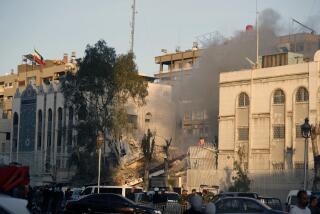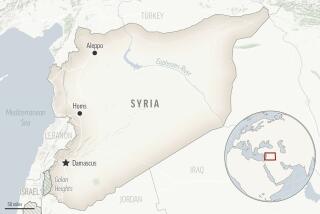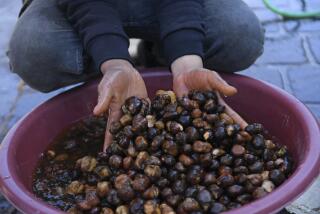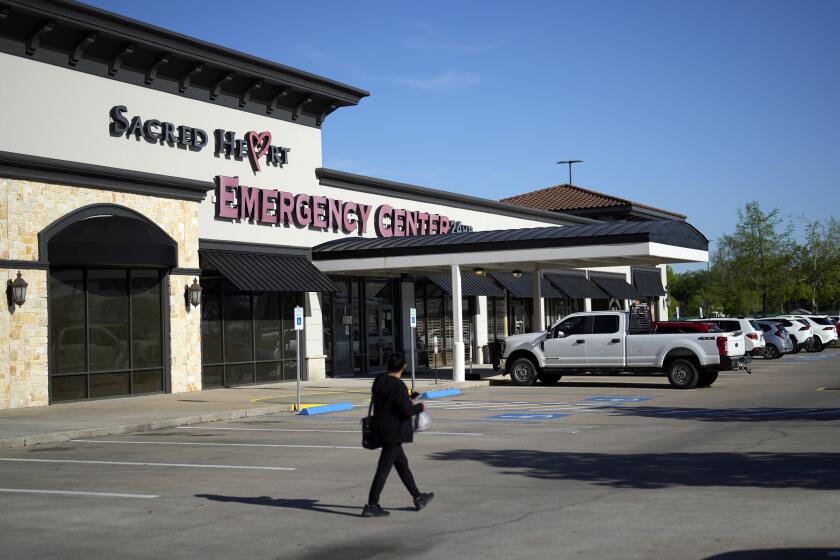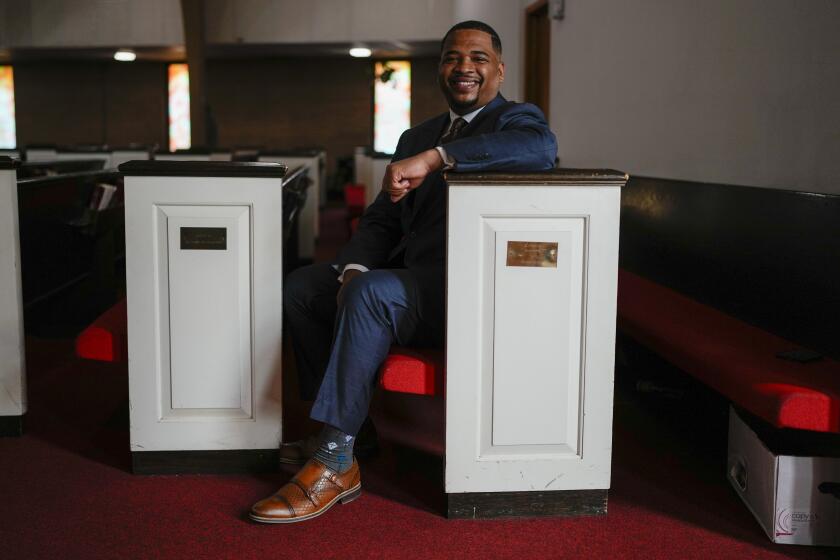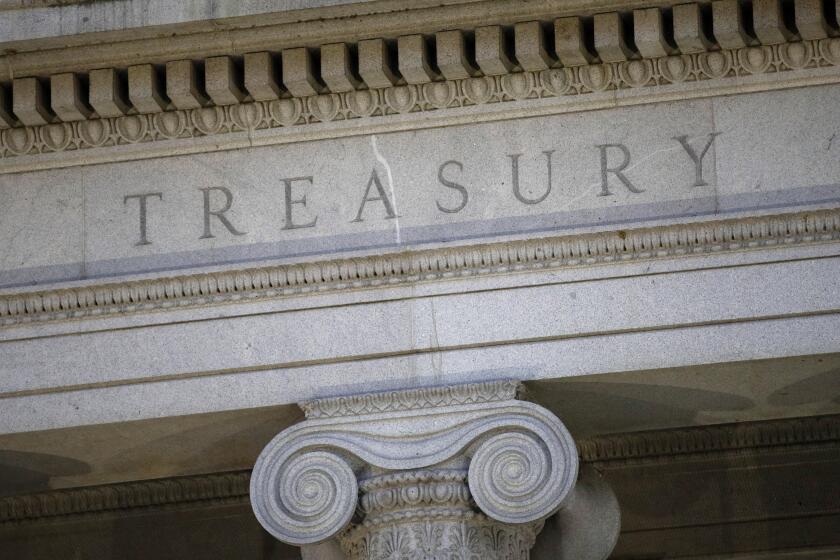Syrian forces attack 4 opposition strongholds
Syrian security forces loyal to the embattled regime of President Bashar Assad launched a major military assault on opposition strongholds Sunday, using tanks and gunfire in authorities’ latest attempt to crush a pro-democracy movement that appears to be gathering momentum ahead of the emotionally and religiously charged holy month of Ramadan.
According to sketchy accounts by activists and residents reached by telephone, Syrian security forces violently attacked several of the country’s opposition hotspots, including the southern city of Dara and the far eastern city of Dair Alzour, with the most intense attacks centered on Hama, the country’s fourth largest city as well as the site of a 1982 massacre by Assad’s father.
Syrian security forces also moved to violently crush solidarity protests that broke out all over the country, especially in neighborhoods in Homs, the country’s third largest city, and Idleb, in the country’s northwest as well as the restive suburbs of Damascus.
At least 70 people were reportedly killed around the country, about 50 of them in Hama, according to activists who warned that the casualty figures were sure to rise.
There were unconfirmed reports of army defections, relatively rare instances where soldiers faltered in their apparently unwavering loyalty to Assad. Unverified video footage showed small groups of soldiers on tanks embraced by activists in Hama.
But much of the news coming out of Syria was far grimmer, underscoring the determination of the Assad regime and its Allawite Muslim minority loyalists to retain absolute control over the country regardless of the human toll and despite the demands of a vast opposition movement that has come to represent the aspirations of the country’s Sunni majority.
“The regime wanted to crush the demos before Ramadan so it’s playing its last card,” said one activist reached in Dair Alzour, near the Iraqi border. “That’s why they attacked us and the other governorates in such an ugly, inhumane manner. The city has witnessed a massacre today.”
Sunday’s offensive carried ugly sectarian overtones. Assad’s secrurity forces, dominated by his Shiite Allawite minority, repeatedly attacked Sunni mosque minarets, according to witnesses and video footage. The timing of the attack, on the eve of the Muslim holy month of dawn-to-dusk fasting and religious contemplation, is sure to provoke the passions of the largely pious rural and provincial Sunnis leading the uprising.
According to one activist, one of the country’s major Bedouin tribes, the Odwan, who straddle Jordan and Syria, were prompted to turn against the regime following the attack, erupting in protest against Assad for the first time in the four-and-a-half month uprising.
Amateur videos posted to the Internet showed a column of black smoke rising from Hama. Witnesses described indiscriminate barrages of gunfire in the center of the city.
Military forces loyal to Assad also stormed into Euphrates River provincial capital of Dair Alzour, which has been open revolt against the regime for weeks. Activists said security forces armed with truck-mounted machine guns fired into crowds of people chanting ant-government slogans and residential neighborhoods. Tanks fired on and destroyed a mosque minaret.
“There are a lot of snipers,” said another resident of Dair Alzour reached by telephone. He asked that his name not be published for fear of retribution. “They are on the rooftops of government buildings. People started chanting for the army’s support but they opened fire in a merciless manner. There is a big lack of medicine and our martyrs and injuries are in the mosques because it’s hard to move around from area to area because of the tanks.”
Activists appeared to be working tirelessly to document the violence. One video clip from Hama showed the bloodied, lifeless body of a dead man described as Faez Mohammad Azy. Another showed volunteers rushing a badly wounded man on a stretcher into a hospital in Hama.
“There are tanks and armored vehicles at the entrances of the city. There are many deaths,” said an activist reached by telephone in Hama, where he said tanks had yet to penetrate the city center. “We don’t know how many yet.”
Assad’s late father, Hafez Assad, and now exiled uncle, Rifaat Assad, all but flattened large sections of the Hama and killed tens of thousands during a similar 1982 uprising.
Videos posted to the Internet by activists showed tanks perched outside the city. Panicked residents could be seen crouching for cover as gunfire rang out. Residents said water and electricity had been cut to sections of the city of 700,000. The doctor who spoke to Reuters said many uncollected bodies lay on the streets of the city, which has been in open revolt against Assad.
The protest rally in the city center Friday was among the largest so far in the country, according to video footage posted online. Protesters defiantly unfurled the green, white and black pre-Baath Party flag of Syria, provocatively questioning the nation’s entire trajectory over the last half century.
Protesters also gathered in Hama on Saturday night, waving banners and spiritedly chanting anti-government slogans while beating drums, video posted to the Internet showed.
Activists, analysts and diplomats expected the confrontation to escalate as Ramadan begins. The Muslim lunar holy month is set to begin in the next day or two.
Syrian security forces have besieged Hama for weeks. U.S. Ambassador to Syria Robert S. Ford and his French colleague, Eric Chevallier, provoked a diplomatic firestorm by visiting the city July 7, a trip that underscored the peaceful nature of a movement that Assad and his adjutants have described as an uprising by unspecified “armed groups” with extreme Islamic agendas.
Assad’s father in 1982 also described the rebellion against his Baath Party rule as a revolt by Islamists.
Sandels is a special correspondent.
More to Read
Start your day right
Sign up for Essential California for news, features and recommendations from the L.A. Times and beyond in your inbox six days a week.
You may occasionally receive promotional content from the Los Angeles Times.
